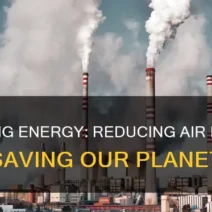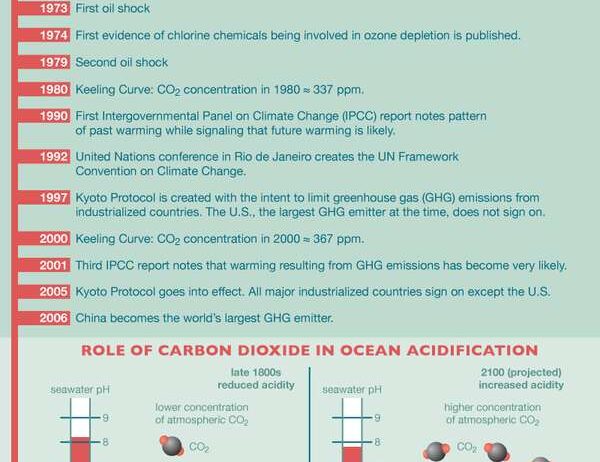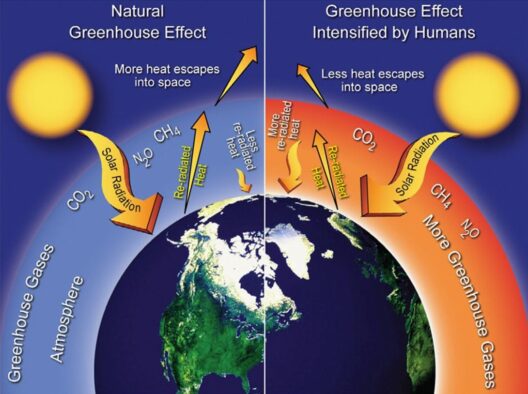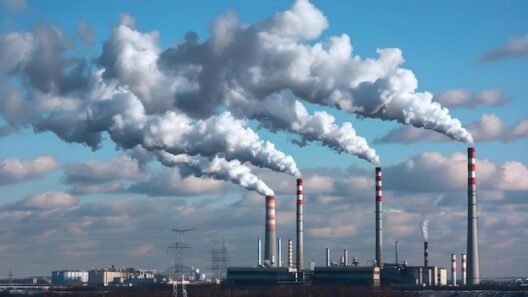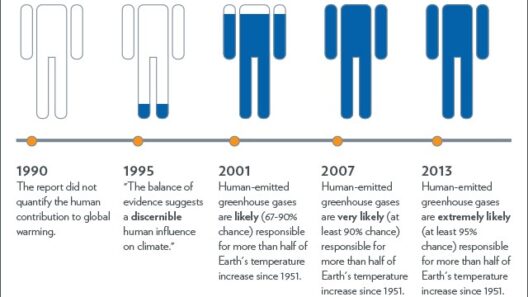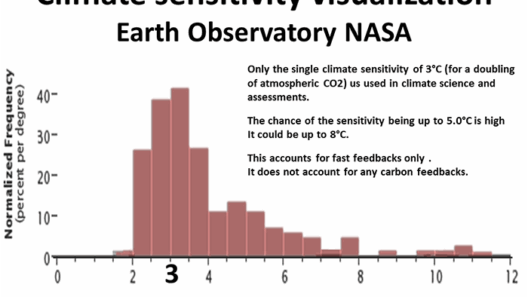As the planet’s thermostat continuously rises, a poignant question emerges: Are humans accelerating climate change? A meticulous examination of historical trends juxtaposed with contemporary data serves to elucidate this pressing issue. This timeline of human impact on the climate serves as a clarion call to action, as it aligns the past with present imperatives, urging society to confront an existential threat exacerbated by human activities.
In the annals of Earth’s history, climatic fluctuations have always occurred. However, the rapidity with which contemporary changes manifest is unprecedented. Scientific records trace atmospheric carbon dioxide levels, revealing a staggering correlation between industrialization and sharp increases in greenhouse gas concentrations. This correlation is not mere coincidence; it is an indictment of anthropogenic actions that prioritize short-term economic gains over environmental stewardship.
The Industrial Revolution marks a pivotal juncture in this timeline. Beginning in the late 18th century, nations turned to coal, eventually transitioning to oil and natural gas. This shift is emblematic of an era characterized by unregulated resource extraction and an insatiable demand for energy. By the year 1800, carbon dioxide levels hovered around 280 parts per million (ppm). The burgeoning industries of Europe and North America began to unleash vast quantities of CO2 into the atmosphere, setting the stage for subsequent calamities.
The ramifications of this transformation began to manifest conspicuously in the late 19th century. The year 1880 serves as a temporal benchmark; it is a significant marker when global average temperatures increased by approximately 0.2 degrees Celsius relative to pre-industrial levels. This rise, however, was merely a prelude to the alterations yet to come—an augury of widespread climatic upheaval.
The early 20th century witnessed an acceleration in affluence, resulting in intensified fossil fuel consumption. The extractive industries expanded, leading to increased emissions. By 1950, global CO2 levels surged to 310 ppm, catalyzing alarming climatic anomalies. The ensuing decades experienced unprecedented changes in weather patterns, resulting in a litany of ecological crises: prolonged droughts, erratic rainfall, and more frequent and intense storms became the new normal.
With the dawn of the late 20th century, deforestation became a critical contributor to climate change. As vast tracts of forests succumbed to logging, agriculture, and urban development, carbon sinks were effectively dismantled. A staggering 13 million hectares of forests are lost annually, further exacerbating atmospheric CO2 levels. The rate of proliferation of human populations compounded these effects, placing immense stress on natural ecosystems and amplifying the anthropogenic carbon footprint.
Yet, the most glaring indicators of climatic distress emerged in the early 21st century. Scientific inquiries culminated in the release of seminal reports outlining the gravity of the climate crisis. The year 2007 witnessed the Fourth Assessment Report of the Intergovernmental Panel on Climate Change (IPCC), drastically amplifying public awareness and concern regarding the impacts of human activity. The repercussions of climate change were no longer just speculative; they materialized through intensified natural disasters and shifting biodiversity.
The timeline does not stagnate; it propels into the current decade, wherein climate change mitigation faces formidable backlash. The global temperature escalated to approximately 1.1 degrees Celsius above pre-industrial levels by 2020, a harbinger of intense weather phenomena that punctuated the last few years. The United Nations calls this period a “code red for humanity,” solidifying the urgent need for immediate and systemic change in our consumption and production paradigms.
The sociopolitical landscape has not been static either. Climate denialism, often propagated by sectors with vested interests in fossil fuels, continues to hinder collective action. Nonetheless, grassroots movements burgeon, revealing a burgeoning environmental consciousness. Young climate activists, armed with data and resolute advocacy, insist upon accountability and ethical governance in corporate and political spheres.
In conjunction with community action, technological advancements emerge as promising allies in the quest for sustainability. Renewable energy technologies—solar, wind, and hydropower—have seen exponential growth, illustrating humanity’s capability for innovation and adaptation. By harnessing sustainable energy production, there lies potential to arrest the relentless rise in GHG emissions.
Despite this glimmer of hope, the trajectory of climate change remains disconcertingly steep. The timeline serves not merely as a historical account, but as a foundational narrative stressing the importance of immediate, informed, and cohesive responses to climate aberrations. Such responses are imperative for mitigating the damage already inflicted and for fostering resilience against future vulnerabilities.
In conclusion, the compendium of events elucidated through this timeline underscores a compelling reality: humans are indeed speeding up climate change. From the Industrial Revolution’s inception to the present-day call for urgent action, every action taken—whether environmentally detrimental or beneficial—contributes to the evolving narrative of our planet’s climatic trajectory. This narrative represents an ultimatum: our collective future hinges on the choices made today. To avert a calamitous fate, we must reckon with the past, acknowledge our complicity, and embark on a path towards sustainability with unwavering resolve and collaborative spirit.

